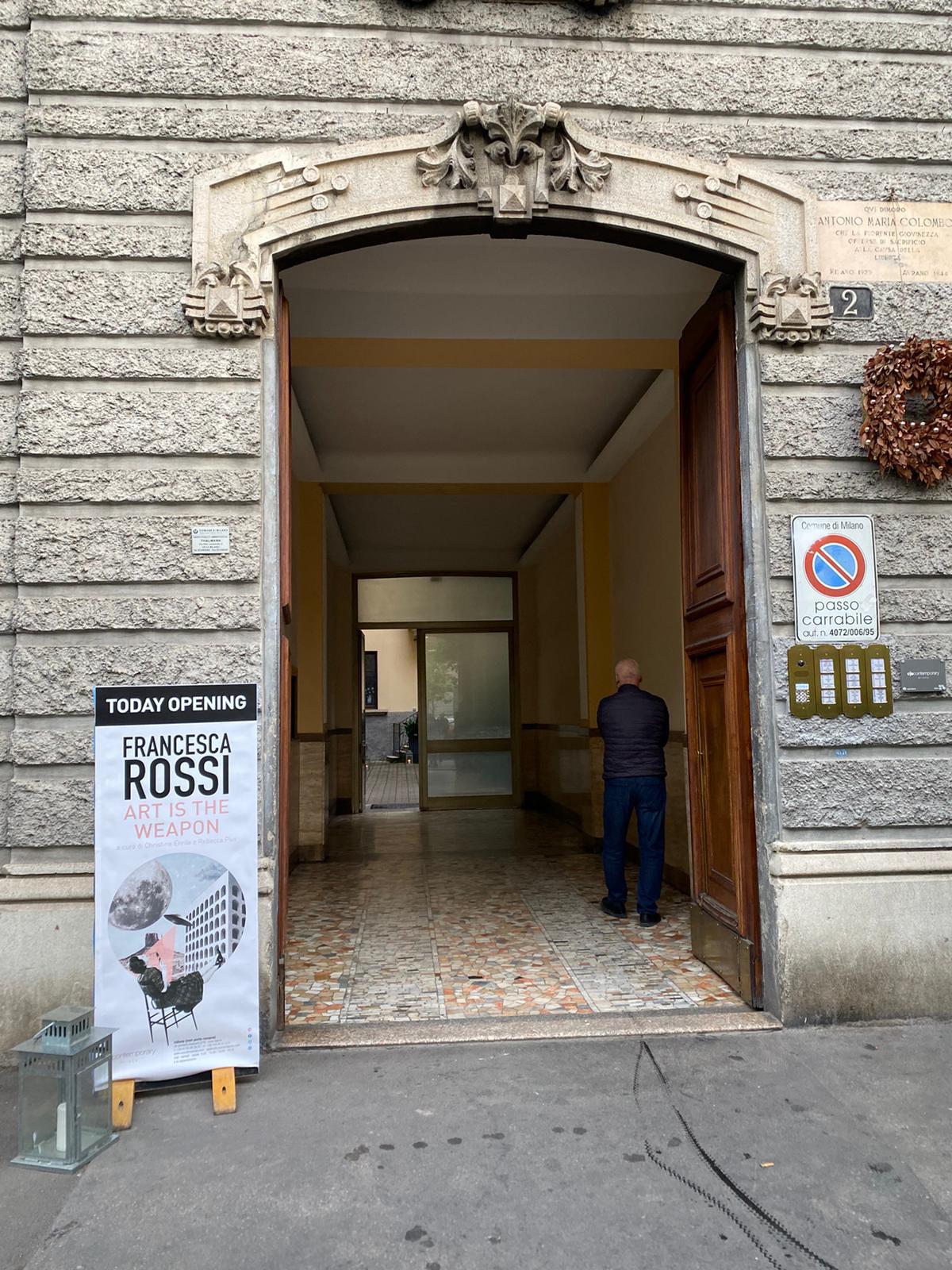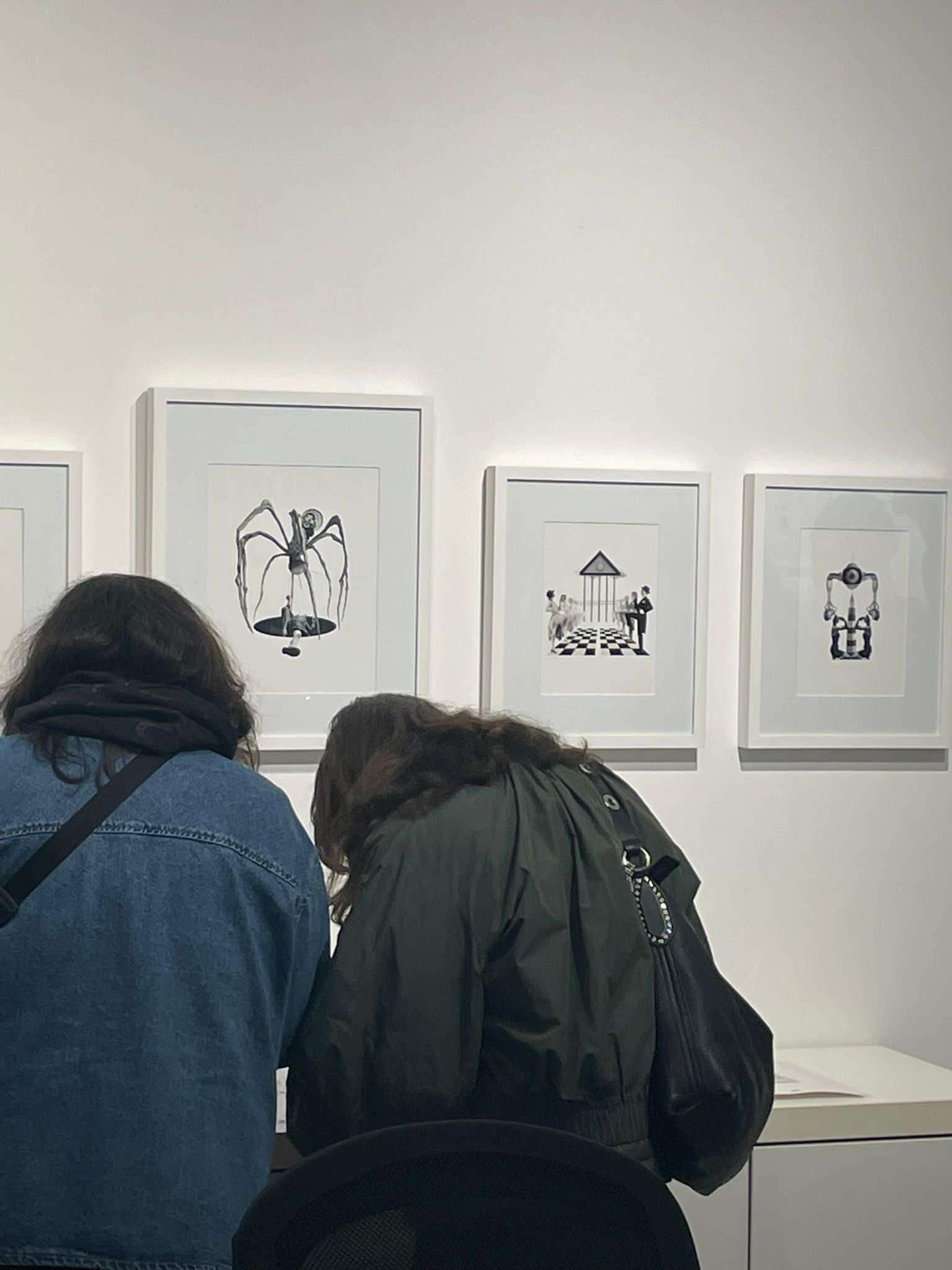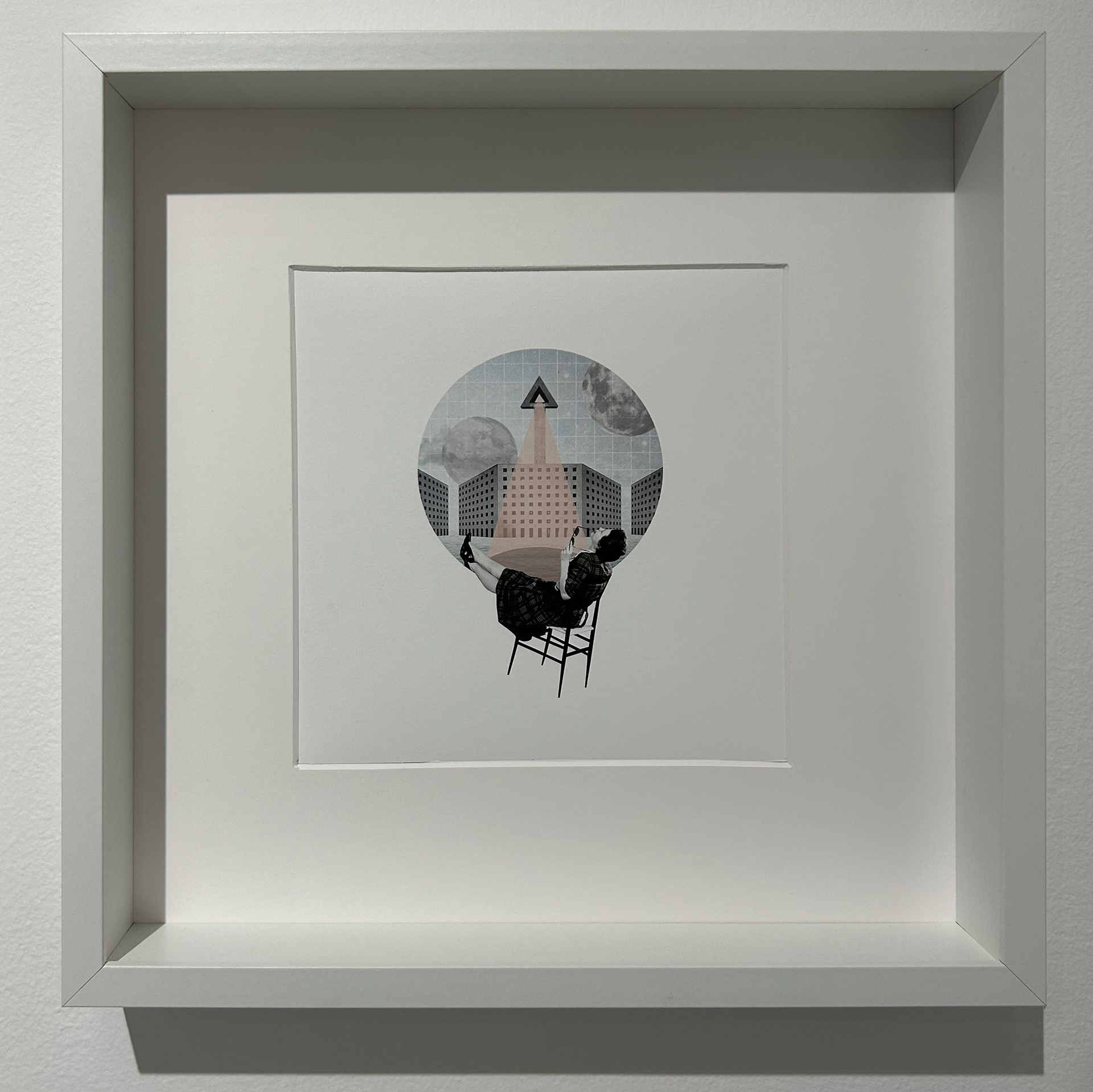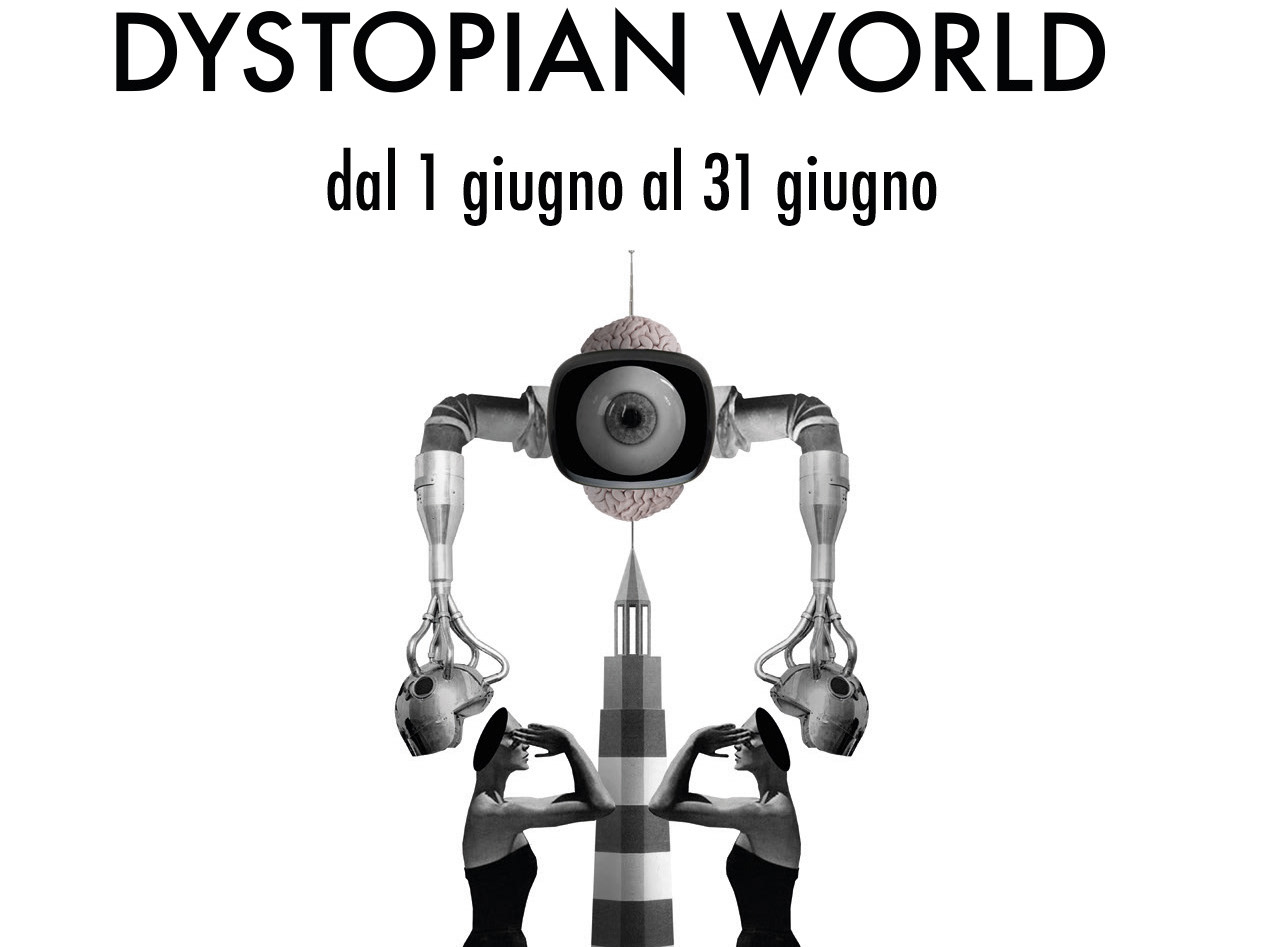













ITA
COLTIVARE L’INATTESO. L’ARTE COME STRUMENTO
Francesca Rossi classe 1993 vive e lavora a Milano città nella quale si è formata, prima al Liceo Artistico e poi al Politecnico. Dopo la Laurea in Architettura, si avvicina al mondo della grafica, iniziando così a esprimersi artisticamente con la tecnica del collage.
Questa artista esordiente, che espone per la sua prima personale, sente da sempre l’Arte come uno strumento. Lo dimostra anche il tatuaggio inciso sul suo braccio destro che riporta le parole che danno il titolo alla mostra, “Art is the weapon”, l’Arte intesa come un’arma da utilizzare per combattere quello che possiamo definire il disagio della modernità.
Un’incisione sulla pelle che per Francesca è un vero e proprio atto sociale, nel senso esposto nelle tesi di Claude Lévi-Strauss: un segno, cioè, che descrive un impulso non solo individuale, ma con profonde connotazioni e risvolti sociali. E che esprime la necessità di questa giovane creativa di riflettere sulla contemporaneità, sui suoi stereotipi, le sue conquiste così come le sue costrizioni e i suoi limiti.
La figura umana, che nelle opere dell’artista, infatti, è sempre protagonista della scena, appare impotente, sottoposta ad una forza deterministica che le impedisce qualsiasi libertà di scelta. Assoggettata al controllo di una forza superiore e tecnologica. Un grande occhio che tutto vede e controlla che diventa elemento visivo ricorrente nella produzione dell’artista.
La sapiente selezione delle immagini, provenienti sia da fotografie degli anni ‘50, sia da grafiche dei nostri giorni, generalmente in bianco e nero o con colori tenui, rendono ogni opera esteticamente vintage e nostalgica e, nel contempo, ironica e audace.
Molte le contaminazioni presenti fra arte e architettura. In ogni realizzazione, infatti, è possibile riconoscere un elemento o un oggetto che ci riconduce ad un’icona del passato: a volte edifici, altre volte oggetti di design. Nella serie ‘Utopia’, per esempio, le immagini narrano la storia di una donna, la cui figura è tratta dalla pubblicità della sedia Superleggera di Gio Ponti.
Suggestionata dai grandi del passato quali Marcel Duchamp, Damien Hirst, Piero Manzoni, Pablo Picasso e Georges Braque, Francesca Rossi lascia andare la sua immaginazione decontestualizzando i suoi soggetti, componendo e trasformando il significato originario delle immagini creando sceneggiature filmiche che si caratterizzano per argomento e titolo: “Distopia”, “Utopia”, “Creazione” e “Stalker”.
L’artista, inoltre, suggerisce la storia al suo fruitore volendo fornire quasi un aiuto alla nostra interpretazione. Ogni opera, infatti, è accompagnata da una parola che diventa incipit dalla narrazione: “Mass Media”, “Lobotomia”, “Maternità”, “Stereotipo”.
Vi invito a “coltivare l’inatteso” immergendovi nei fantastici e perturbanti mondi rappresentati dalle immagini che questa giovane autrice ha realizzato per la mostra “Art is the weapon”. Francesca Rossi ci parla di noi, di quello che ci circonda di conscio e inconscio, di manipolazione mentale, di condizionamenti sovrastrutturali e tecnologici tentando di darci strumenti visivi e emozionali per avere le armi per (ri)conoscerci e difenderci.
Testo di Christine Enrile
ENG
NURTURE THE UNEXPECTED. ART AS A TOOL
Francesca Rossi, born in 1993, lives and works in Milan, the city where she studied, first attending the Liceo Artistico and later the Politecnico. After graduating in Architecture, she approaches the world of graphics, thus starting to express herself artistically with the collage technique.
This rookie artist, who is exhibiting for her first solo show, has always felt Art as a tool. This is also demonstrated by the tattoo engraved on her right arm showing the words that give the title to the exhibition, “Art is the weapon”: Art seen as a weapon used to fight what we can define as the uneasiness of modern times.
This incision on her skin is a real social act for Francesca, in the meaning set out in Claude Lévi-Strauss’ theses: a sign which describes an impulse that is not only individual, but with deep social connotations and implications. And which expresses the need for this young creative to reflect on the contemporary world, on its stereotypes, its achievements as well as its constraints and limitations.
The human figure, always protagonist of the scene in the artist’s works, appears powerless, subjected to a deterministic force preventing any freedom of choice. Subjected to a superior technological power. A big eye that sees and controls everything, a visual element recurring in the artist’s production.
The clever selection of images, coming both from photographs from the 1950s and from modern graphics, generally in black and white or soft colors, makes each work aesthetically vintage,nostalgic and, at the same time, ironic and audacious.
There are many influences between art and architecture in Francesca’s work. In fact, in each creation it is possible to see an element or object that brings us back to an icon of the past: sometimes buildings, other times design objects. For instance, in the series ‘Utopia’, the images tell the story of a woman whose figure is taken from the advertisement of the chair “Superleggera” by Gio Ponti.
Inspired by the greats of the past such as Marcel Duchamp, Damien Hirst, Piero Manzoni, Pablo Picasso and Georges Braque, Francesca Rossi lets her imagination go by decontextualizing her subjects, composing, and transforming the original meaning of the images creating film scripts characterized by topics and titles: “Dystopia”, “Utopia”, “Creation”, and “Stalker”.
Furthermore, the artist suggests the story to its user, wanting to provide almost an aid to our interpretation. In fact, each work is matched by a word becoming the incipit of the narration: “Mass Media”, “Lobotomy”, “Maternity”, “Stereotype”.
I invite you to “nurture the unexpected” by immersing yourself in the fantastic and disturbing worlds represented by the images that this young author has created for the exhibition “Art is the weapon”. Francesca Rossi talks about us, about what surrounds us, of conscious and unconscious, mental manipulation, superstructural conditioning and technologies trying to give us visual and emotional tools to have the weapons to (re)know and defend ourselves.
Written by Christine Enrile



ITA
UNIVERSI SURREALI: TRA UTOPIA E DISTOPIA
Caratterizzati da un’ironia pungente e irriverente, i collage digitali di Francesca Rossi, colpiscono da subito per la loro inquietante bellezza ed estetica retrò. Gli universi ideati dall’artista esortano lo spettatore a riflettere sulla sua esistenza con annesse tutte le paure che caratterizzano la contemporaneità.
Rossi da vita a mondi che non esistono ancora, o forse si, perché se ad una prima lettura questi lavori sembrano volerci trasportare in distopie o visioni utopiche, ad un’analisi più accurata, comprendiamo che gli universi che ci troviamo davanti sono definiti da stereotipi, costrizioni sociali, libertà negate, manipolazione mentale e molti altri demoni della nostra società.
La figura umana, spesso ignara del suo tragico destino e persa nelle contraddizioni quotidiane, è centrale nelle opere dell’artista. In tutte e quattro le serie in mostra, i protagonisti della scena devono fare i conti con situazioni estreme ed esagerate; spiazzati dalle loro provocazioni controverse, ciò nonostante avvertiamo queste storie curiosamente familiari.
Nella serie “Distopia” i personaggi fluttuano in atmosfere sospese, pochi elementi delineano una situazione surreale dove lo spazio bianco non ci trasmette una sensazione di mancanza ma esalta le figure ed enfatizza l’irrequietezza della scena. Occhi giganti, tipici dell’immaginario surrealista, si combinano a elementi robotici, gabbie e arti solitari che incombono su figure che appaiono spensierate e ingenuamente felici.
Attraverso delle immagini che sembrano ambientate a cavallo tra passato e futuro, l’artista ci trascina in realtà di fronte ai drammi del presente, in alcuni casi stemperati da elementi che ci donano un briciolo di speranza, in altri drammaticamente nichilisti come nell’opera “Vita” in cui una coppia balla allegramente sopra un missile della seconda guerra mondiale che potrebbe esplodere da un momento all’altro a causa della sigaretta accesa sorretta da una mano che sbuca da un buco nero.
Fra le immagini più evocative e intimidatorie bisogna per forza citare “Maternità” in cui la figura femminile è trasfigurata e rappresentata come un gigantesco ragno che ingabbia e allo stesso tempo protegge un bambino. Sdraiato e incantato dal pungiglione dell’ibrido, il fanciullo non sembra accorgersi della sua condizione di prigioniero. L’emblematica scultura in bronzo Maman di Louise Bourgeois, omaggio alla maternità e al mondo femminile, viene resa protagonista mostrandoci però la contraddizione e la duplicità delle azioni umane.
L’idea di libertà negata si palesa ancora una volta nell’opera “Super-io” in cui una mano stringe i capelli di una giovane donna guidandola, o meglio limitandola, nelle scelte che dovrà affrontare nel corso della sua vita. Questa mano, sospesa sopra la figura, quasi fosse una presenza divina, è spesso presente nelle opere della Rossi e sembra volerci guidare per non farci sbagliare o soffrire, o più probabilmente cerca di dominarci, privandoci dell’opportunità di scegliere.
L’artista crea un’acuta critica alla società e all’assuefazione delle masse nei confronti della tecnologia ma ci porta anche a riflettere sulle paure legate all’idea di prendere una decisione importante e subirne le conseguenze nel bene e nel male.
La serie “Utopia” comprende invece 3 opere la cui successione ci narra la storia di una donna che, dondolandosi sulla sedia super leggera di Gio Ponti, sembra in rassegnata attesa di qualcosa o qualcuno, forse della navicella spaziale che si staglia su un paesaggio abitato da un’immensa luna sotto la quale convivono la Monument Valley e l’iconico e possente Colosseo quadrato.
Un messaggio di speranza ci viene invece incontro nell’opera centrale in cui una madre e il proprio figlio cercano di rimanere in contatto comunicando attraverso una coppia di aironi, spesso protagonisti delle fiabe ma anche animali simbolici legati alla leggenda della fenice e al concetto di rinascita, equilibrio e determinazione.
Nelle ultime due serie “Basic” e “Surrealism”, l’artista continua a rivelare e rilevare temi quali il destino, il controllo, il senso di precarietà nei confronti del futuro, il disagio che scaturisce dalla consapevolezza di essere in qualche modo non del tutto padroni della propria esistenza. I protagonisti di queste ultime narrazioni psicografiche hanno il coraggio di scegliere, di affrontare le difficoltà per provare a conquistare il proprio posto nel mondo a dispetto degli ostacoli che costellano la quotidianità.
Nella prima serie l’artista si esprime attraverso una grafica essenziale e all’utilizzo di pochi elementi attraverso i quali riesce a condensare profondi significati.
Nei collage “Creazione” e “Stalker” occhi spalancati e dallo sguardo inquietantemente fisso osservano la scena dandoci la sensazione che il protagonista sia prigioniero di un destino già scritto e in cui ogni azione viene costantemente giudicata. Ma lo stesso senso di impotenza si palesa anche nella seconda serie. Nell’opera “inferno” infatti, un Caronte magrittiano si ripara da una pioggia di persone che, come provetti tuffatori, cadono in acqua in attesa di essere classificati secondo il proprio girone infernale.
È seducente quanto destabilizzante trovarsi di fronte ai mondi quasi totalmente in bianco e nero creati dall’artista che, fin da giovanissima, ha sempre visto l’arte come un mezzo per una continua introspezione del mondo, non a caso le è cara la frase ART IS THE WEAPON. L’arte per Francesca Rossi è portatrice di critica, un mezzo per parlare del presene.
Il termine più adatto per esprimere questo tipo di tensione artistica è sicuramente “Artivism”,che in italiano tradurremmo come“Artivismo”, due vocaboli che sembrano essere nati per convivere. Nelle opere della Rossi l’arte diventa un’incredibile cassa di risonanza per porre l’attenzione su problemi contemporanei e tematiche scottanti, che vedono lo spettatore coinvolto in prima persona grazie al potere comunicativo dell’arte.
Testo di Rebecca Piva
ENG
SURREAL UNIVERSES: BETWEEN UTOPIA AND DYSTOPIA
Characterized by a biting and irreverent irony, Francesca Rossi’s digital collages are immediately striking for their disturbing beauty and retro aesthetics. The universes created by the artist urge the viewer to reflect on her existence with all the fears that characterize the contemporary world.
Rossi gives life to worlds that don’t exist yet, or maybe yes, because if at first reading these works seem to bring us into dystopias or utopian visions, with a more accurate analysis, we understand that her universes are defined by stereotypes, social constraints, denied freedoms, mental manipulation and many other demons of our society.
The human figure, often unaware of its tragic destiny and lost in everyday contradictions, is key to the artist’s works. In all the four series on show, the protagonists of the scene have to deal with extreme and exaggerated situations; taken aback by their controversial provocations, we nonetheless feel these stories curiously familiar.
In the “Dystopia” series the characters float in suspended atmospheres, a few elements outline a surreal situation where the white space does not give us a feeling of lack but enhances the figures and emphasizes the restlessness of the scene. Giant eyes, typical of surrealist imagery, combine with robotic elements, cages and solitary limbs that loom over figures that appear cheerful and naively happy.
Through images that seem to be set between the past and the future, the artist actually drags us in front of the dramas of the present, in some cases mingled by elements that give us a shred of hope, in others dramatically nihilistic as in the work “ Life” in which a couple happily dances on top of a World War II missile that could explode at any time, due to a lit cigarette held up by a hand coming out of a black hole.
Among the most evocative and intimidating images we must necessarily mention “Maternity” in which the female figure is transfigured and represented as a gigantic spider that cages and at the same time protects a child. Lying down and enchanted by the sting of the hybrid, the child does not seem to notice his condition of prisoner. The emblematic bronze sculpture “Maman” by Louise Bourgeois, a tribute to motherhood and the female world, became the protagonist, however, showing us the contradiction and duplicity of human actions.
The idea of denied freedom is revealed once again in the work “Super-io“in which a hand grips the hair of a young woman, guiding her, or rather limiting her, in the choices she will have to face throughout her life. This hand, suspended above the figure, almost as if it were a divine presence, is often present in Rossi’s works and seems to guide us so we can’t make mistakes or suffer, or more likely tries to dominate us, depriving us of the opportunity to choose.
The artist creates an acute critique of society and the addiction of the masses to technology but also leads us to reflect on the fears associated with the idea of making an important decision and suffering the consequences for better or for worse.
The “Utopia” series, on the other hand, includes 3 works whose succession tells us the story of a woman who, rocking on Gio Ponti’s super light chair, seems to be resignedly waiting for something or someone, perhaps for the spaceship that stands out against a landscape inhabited by a immense moon under which the Monument Valley and the iconic and mighty square Colosseum coexist.
A message of hope instead comes towards us in the central work in which a mother and her son try to stay in touch by communicating through herons, often protagonists of fairy tales but also symbolic animals linked to the legend of the phoenix and the concept of rebirth, balance and determination.
In the last two series “Basic” and “Surrealism”, the artist continues to reveal and highlight themes such as destiny, control, the sense of precariousness towards the future, the discomfort that arises from the awareness of being somehow, not entirely masters of one’s own existence. The protagonists of these latest psychographic narratives have the courage to choose, to face the difficulties to try to conquer their place in the world despite the obstacles that dot everyday life.
In the first series, the artist expresses herself through essential graphics and the use of a few elements through which she manages to condense deep meanings.
In the “Creation” and “Stalker” collages, wide-open eyes with a disturbingly fixed gaze observe the scene giving us the feeling that the protagonist is a prisoner of an already written destiny and in which every action is constantly judged. But the same sense of helplessness is also evident in the second series. Indeed, in the work “Inferno”, a Magrittian Charon shelters from a rain of people who, like expert divers, fall into the water waiting to be classified according to their own infernal circle.
It’s as seductive as destabilizing to be faced with the almost totally black and white worlds created by the artist who, from a very young age, has always seen art as a means for a continuous introspection of the world, it is no coincidence that the phrase ART IS THE WEAPON is dear to her. Art for Francesca Rossi is the bearer of criticism, a means to talk about the present.
The most suitable term to express this type of artistic tension is certainly “Artivism”, which in Italian we would translate as “Artivismo”, two words that seem to have been born to coexist. In the artist’s works, art thus becomes an incredible sounding board to draw attention to contemporary problems and burning issues by involving the viewer thanks to the communicative power of art.
Written by Rebecca Piva
__________________________________________________________________________________________________
all images © Copyright 2023 Francesca Rossi


